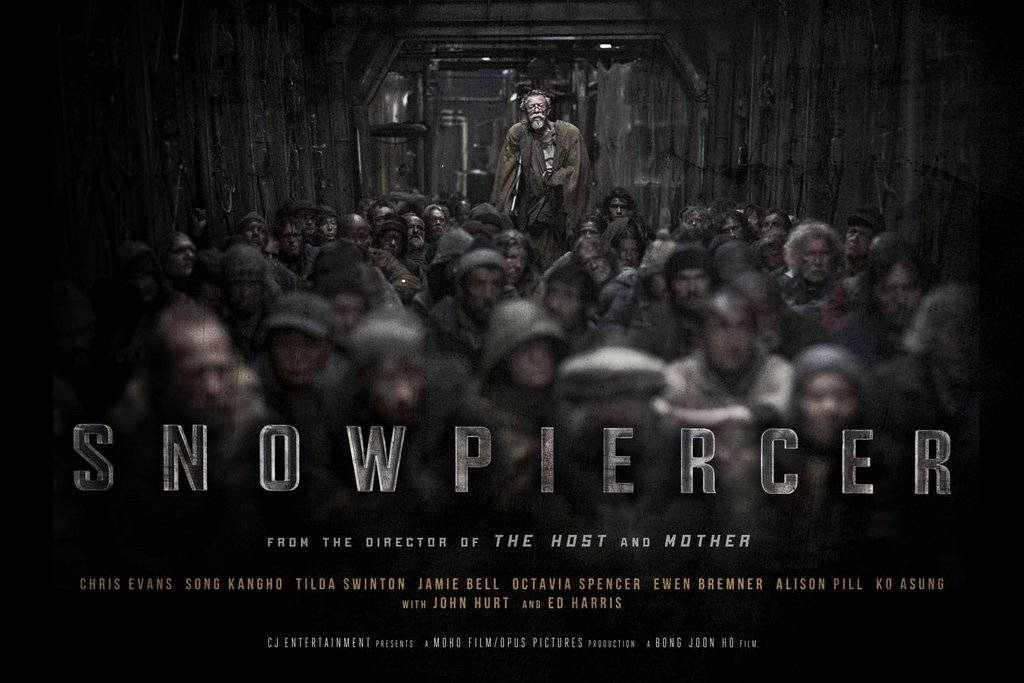Edgy Stuff: December 2014 Recommendations

The Edge Effects editorial board brings you a handful of recommendations based on the most interesting stuff that’s come across our desks, screens, and speakers over the last month (or so). From books and articles, to podcasts, music, and film, we’ll keep you on the edge.
Mohammed Rafi Arefin
For those interested in the regulation of waste and pollution, I recommend two articles covering the EPA’s major decision about how it regulates coal ash. Coal ash, America’s second-largest waste source, is a catchall term for the myriad substances that are produced when coal is combusted to create electricity. Citing coal ash’s high levels of lead and arsenic, environmental groups have gone through legal channels to pressure the EPA to categorize it as a hazardous waste. In the EPA’s much anticipated decision, the agency moved not to classify it as a hazardous waste, but did see the need for increased regulations in its production and disposal. Think Progress covered both the lead-up to the decision and its reception with a balanced discussion of the policy’s implications and an important map depicting the locations of coal ash waste sites across the country.

View of a 2008 fly ash spill from the Tennessee Valley Authority Kingston Fossil Plant. Fly ash is one of many hazardous substances included in the category of coal ash. Photo by Brian Stansberry. Click to enlarge.
Rachel Boothby
Rob Nixon wrote in his November post, “We may all be in the Anthropocene but we’re not all in it in the same way.” The fractured nature of the Anthropocene experience is made abundantly clear in South Korean director Bong Joon-ho’s 2013 film, Snowpiercer, set in the not-so-distant future aboard a hurtling train. Following an experiment to combat global warming gone awry, Earth’s few survivors are contained on the rattling “ark” Snowpiercer as it circumnavigates a frozen Earth. The train’s occupants are divided between the “haves” at the front of the train and the “have-nots” at the tail. The plot follows one tail-dweller, Curtis, through the train’s fantastical cars as he stages a rebellion aimed at overthrowing conductor-overlord Wilford (played by a disconnected Ed Harris), who dines on steaks while those in the tail are allotted protein bars made out of… well, I’ll let you find out. Adapted from French graphic novel, “Le Transperceneige,” Snowpiercer is unrelenting in its bloodshed with easily a dozen cover-your-eyes-worthy scenes. But if you’re not too squeamish, the brutality of what Nixon called the “deepening schism between the uber-rich and the ultra-poor” is made terribly explicit in this post-apocalyptic vision of an Anthropocene future.
Spring Greeney
What do you get when you cross Timothy Reckart’s unutterably humane storytelling with Nick Park’s penchant for non-human settings and Werner Herzog’s dry German commentary? “Das Rad” (English title “Rocks”) is one possibility. An 8-minute 33-second animated short told through the eyes of two stone protagonists, the story depicts geologic time as nothing else I’ve seen manages to do: trees explode into existence, wooden wheels crumble into dust, and paved roads cross craggy landscapes in the briefest of flashes. If Peter Boger’s list of “Environmental Films That Provoke Thought … and Chuckles” didn’t leave you with sufficient media distractions this holiday season, “Das Rad” is an indulgence well worth your (human) time.
Nathan Jandl
Sarah Groeneveld’s recent post on animal studies got me thinking about some of my favorite poems about animals, and I re-discovered a few that are particularly affecting. One, by Philip Levine, is about a proud pig on its way to slaughter; the opening lines are delightful: “It’s wonderful how I jog / on four honed-down ivory toes / my massive buttocks slipping / like oiled parts with each light step.” My favorite poem by Elizabeth Bishop is “The Moose,” in part because she asks a question that anyone who has encountered a large animal in the wild will understand: “Why, why do we feel / (we all feel) this sweet / sensation of joy?” Finally, Richard Wilbur’s “A Black November Turkey” is a triumph of precise language matched with a humorously regal subject, who is “darkly auspicious as / The ace of spades.”
Adam Mandelman
We’ve long been worried about the quality of water we put in our bodies, but what about the stuff that comes out? According to the US Geological Survey, 80% of the nation’s streams contain trace pharmaceuticals, largely thanks to wastewater treatment facilities that were never designed to capture such substances. Everything from antidepressants, antibacterials, and birth control hormones, to illicit drugs like morphine, cocaine, and ecstasy are all flowing back into US watersheds and appearing in drinking water all across the country. Adam Piore’s essay for Nautilus suggests these substances don’t just (re)affect humans downstream: microcontaminants are altering the sex ratios of fish populations and possibly rendering them too “blissed out” to escape predators.

Wastewater treatment plant in Moorefield, WV, October 2013. Photo courtesy of the Chesapeake Bay Program. Click to enlarge.
John Suval
Mountain gorillas in the Democratic Republic of Congo’s Virunga National Park face myriad threats—poachers, rebel soldiers, and international oil prospectors, to name just a few. Standing between these creatures and annihilation is a cadre of rangers who confront great dangers to safeguard the park and its wildlife. Such is the story—heartbreaking and hopeful—at the center of the documentary “Virunga.” The film features stunning footage of wildlife, introducing viewers to four orphaned gorillas whose love of play, penchant for hugs, and distress amid exploding ordnance pull at the heart. Equally powerful is the commitment of the rangers, willing to sacrifice everything for Virunga’s communities, non-human and human.

A young mountain gorilla in Virunga National Park. Photo by Cai Tjeenk Willink, Wikimedia Commons. Click to enlarge.

You must be logged in to post a comment.